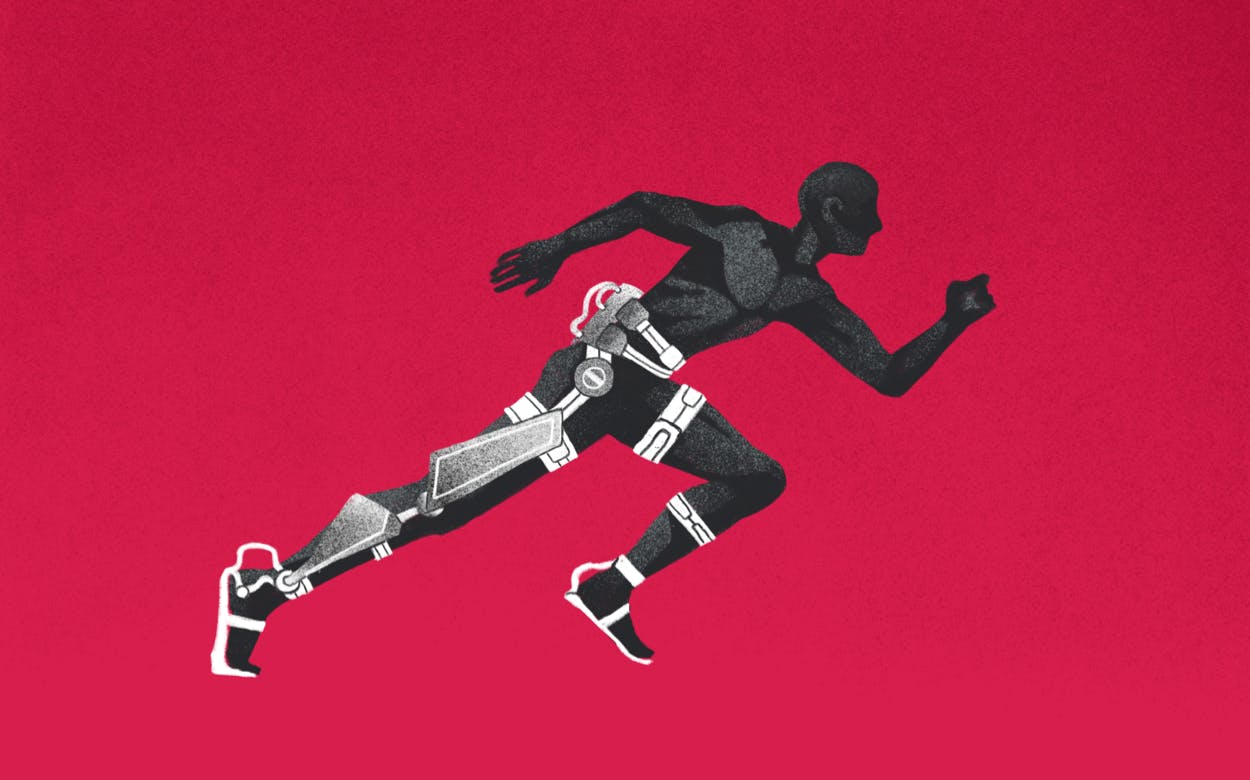Wearable robotic exoskeletons could help humans to perform extrahuman tasks and overcome disabilities. But accessibility must improve.
A big win in the news last month for quadriplegic patients, as German courts rule that wearable robotic exoskeletons will be eligible for direct disability compensation. Yet despite this milestone, MedTech solutions for people with mobility conditions are still not sufficiently accessible on a global scale.

Imagine a person slowly walking toward you. As they get closer, you notice they have machinery strapped to their legs and back, which seems to be helping them walk.
This isn’t a science fiction scenario. It’s a reality certain patients with spinal cord injuries (SCIs) are experiencing: the availability of wearable robotic exoskeletons. And fortunately, the accessibility of this life-changing technology is increasing.
In Germany, state courts have ruled that the wearable exoskeletons of ReWalk Robotics will be eligible for direct disability compensation. BARMER, one of Germany’s largest health insurance providers, announced it will accept the state court ruling and withdraw its pending federal case.
This is a big win for patients with spinal cord injuries (SCIs). Eligible insured patients will now have a legal basis to access this revolutionary mobility technology. This access will not hinge on patients’ previous use of supplied medical aids, lowering the burden of proof needed to apply for compensation.
“After seven years of waiting to walk in an exoskeleton, I am excited that BARMER will now provide me with a ReWalk,” said Lars Vinken, the plaintiff in the case. “It is of great value to know that other paraplegics will now have easier access to this technology. To be supplied with an exoskeleton and be able to stand up and walk again at any time opens new horizons for me.”
How do artificial exoskeletons help spinal cord injury patients?
Robotic exoskeletons can help users with SCIs stand upright, walk, turn, and even climb stairs—activities that may have previously been unimaginable for these patients.
ReWalk’s Personal 6.0 System is designed for all-day indoor and outdoor mobility use. The system is powered by a battery and motors at the hip and knee joints, which wield the user’s center of gravity to control movement. Essentially, the system allows users to activate the system to take a step—simply by tilting their upper body forward.
Exoskeletons like these are personalized to each user because a perfect fit is essential to their effective and safe function. As a result of this customization and specialized training with the device, robotic exoskeleton users can become more independent. Some users have even reported experiencing less pain due to the core engagement involved in using the exoskeleton.
The availability of exoskeleton technology is growing
Interested eligible patients aren’t limited to ReWalk’s system. Other companies providing robotic exoskeletons to patients have cropped up across the globe—including Wandercraft (France), Fourier Intelligence (China), Bionic Yantra (India), and Twiice (Switzerland).
In fact, Fortune Business Insights reported that the wearable robotic exoskeleton market is expected to exceed $8.241 million by 2028. The increased adoption of wearable exoskeletons in the medical industry is a significant part of this, but the growth is also fueled by industrial applications of the technology.
So while the MedTech industry is clearly busy creating and improving these technologies, the question remains: Who gets to use them?
A financial access barrier for quadriplegic patients
The World Health Organization (WHO) has estimated that every year, between 250,000 and 500,000 people experience an SCI globally. People with SCIs are two to five times more likely to die prematurely than people without an SCI. SCIs are also associated with several further debilitating sequelae, as well as substantial social and further financial losses.
The picture isn’t rosy for people living with SCIs. For these individuals, access to technology could drastically improve their independence and overall quality of life.
While German SCI patients interested in using a robotic exoskeleton may breathe a sigh of relief after this ruling, this won’t be the case for patients in many other countries.
In the U.S., 20% of people with mobility disabilities live below the poverty line, and about half of mobility device users pay entirely out-of-pocket. ReWalk received authorization for Medicare coverage in 2020, but most private insurers still don’t cover it, and the sticker price of a ReWalk exoskeleton (as well as those of its competitors) remains in the high five-figures.
Our take: We need to prioritize patient accessibility over industry and military applications
With this ruling, Germany validates how MedTech solutions can make meaningful differences in patients’ lives. These are not trivial, elective interventions. Rather, they’re life-changing accessibility aids.
As we celebrate this accessibility win, we need to remember the people for whom these technologies are designed: the people whose lives they dramatically improve. Yet as they advocate for private and public payor coverage for patients in need, MedTech industry players are not naive to other lucrative applications—including industry and military contracts.
Despite mixed public opinion, the use of exoskeletons to make manual laborers stronger is clearly a development priority for companies like Esko Bionics. Similarly, the U.S. military is also reportedly in talks with MedTech industry players about using exoskeletons to improve soldier performance and endurance.
While acknowledging companies’ needs to explore all profitable avenues, we must avoid prioritizing labor efficiency over granting access to patients whose lives the devices could dramatically improve.